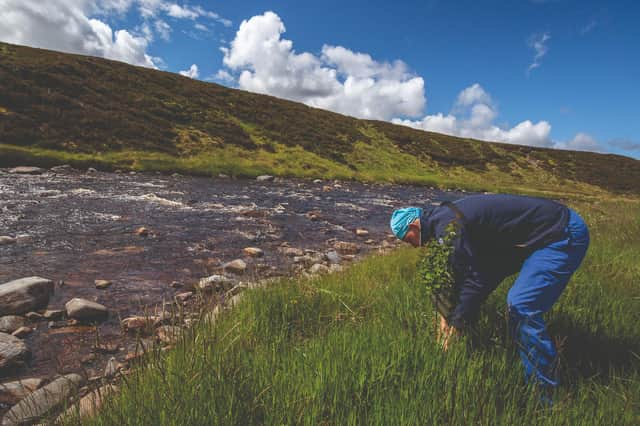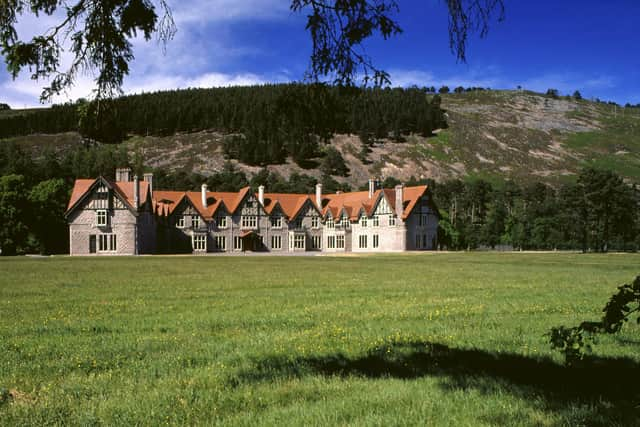Woodland restoration project gets underway on Glen Geldie


The Geldie Woodland project, led by the National Trust for Scotland on its Mar Lodge Estate is one of the most ambitious habitat-restoration schemes ever tackled by the conservation charity.
It is being delivered in partnership with the Dee District Salmon Fishery Board, River Dee Trust, the Cairngorms National Park Authority and Scottish Forestry.
Advertisement
Hide AdAdvertisement
Hide AdThe holistic approach to restoring Glen Geldie, on the western side of the estate, will see over 120 hectares planted with more than 100,000 native Scots tree species along the banks of the River Geldie.


Through time, the increase in vegetation will help slow the flow of water through the river system, alleviating flood risk downstream, while helping to prevent soil erosion and further loss of deep peat on the river’s banks.
The planting along the banks of the river, a key spawning tributary for the River Dee’s iconic wild salmon, will benefit the river’s biodiverse ecosystem by providing vital cooling shade and leaf litter to enrich the nutrient-poor water, where rising water temperatures due to climate change are posing a significant threat to the future of the species.
The National Trust for Scotland alongside The Dee Fishery Board are planning further work in the Geldie, aiming to provide immediate benefits to the water habitat for spawning salmon, juvenile fish and other endangered species such as the freshwater pearl mussel.
This will be achieved by placing large tree trunks with root plates into the river at strategic points, a process which would happen naturally in a well-forested river valley.
The Glen Geldie area on the Mar Lodge Estate, the largest National Nature Reserve in the British Isles, lost most of its native tree cover more than 2000 years ago so the tree planting will provide a valuable seed source where currently there are no trees to enable natural woodland regeneration.
The transformation begins this autumn with the planting of Scots pine, rowan, juniper, birch, alder and willow along the upper reaches of the glen, all protected from grazing deer.
In the long term, the woodland creation will help to connect wildlife corridors along the river network and across catchments, such as Glen Feshie to the west.
Advertisement
Hide AdAdvertisement
Hide AdThe woodland planting and water habitat enhancement alongside peatland restoration, will provide significant benefits to both the freshwater and terrestrial biodiversity in Glen Geldie.
After restoring around 90 hectares of peatland last year, the team at Mar Lodge are undertaking a three-year programme to restore degraded peatland in the north side of the Glen where there are extensive areas of bare peat, dried out gullies and heavily eroded peat hags.
Peat, which acts as a carbon sink will be restored and brought back to life, allowing it to continue locking in carbon rather than releasing it into the atmosphere, a vital resource in tackling climate change.
This work is supported by the Cairngorms National Park Authority and NatureScot.
David Frew, National Trust for Scotland’s Head of Mar Lodge Estate, said the project fits firmly within the National Trust for Scotland’s wider vision for the land in its care.
He said: “We are pleased to start work on this ambitious project alongside our partners that will improve freshwater habitat and combat climate change in the glen.
"Our recently launched ten-year strategy, Nature, Beauty & Heritage for Everyone, addresses the urgent need to tackle the twin challenges of climate change and biodiversity loss, and this work is a significant step in contributing to these goals.”
The River Dee Trust’s Chair, Sandy Bremner, stressed the urgency of the project: “We are in a race against time to save and restore our salmon stocks which play a pivotal role in the whole ecosystem.
Advertisement
Hide AdAdvertisement
Hide Ad"Restoring their home rivers will help them survive the challenges at sea where they are dying in large numbers. Salmon have enriched our communities and cultures for thousands of years.
"This project will help us in the battle to pass on that heritage to future generations.”
Dr Lorraine Hawkins, River Director for the Dee District Salmon Fishery Board, said: “This is a great step forward in our target to plant one million trees in the upper Dee catchment, to protect our remaining wild salmon stocks from climate change and restore the habitat to allow salmon numbers to recover”.
The project is enabled by significant support from funder Baillie Gifford and the Scottish Government’s forestry grant scheme.
The Geldie Woodland project is part of the National Trust for Scotland’s vision to deliver Nature, Beauty & Heritage for Everyone.
The project is one of many contributing to its conservation objectives, specifically to:
Stabilised and improved the condition of our estate Enrich Scotland’s protected heritage Enabled nature to flourish
Established in 1931, the National Trust for Scotland is Scotland’s largest conservation charity and cares for, shares and speaks up for Scotland’s magnificent heritage.
For more information on the National Trust for Scotland visit www.nts.org.uk.